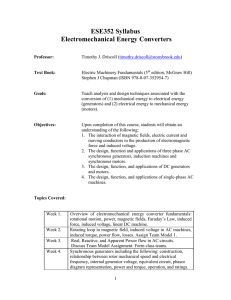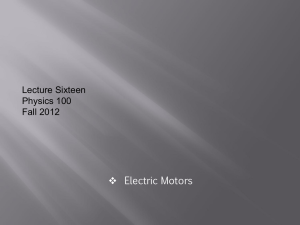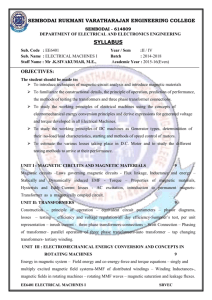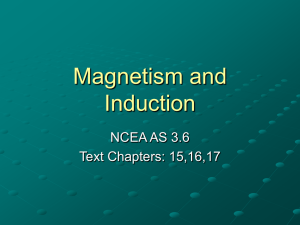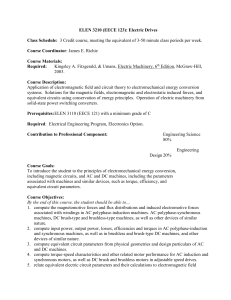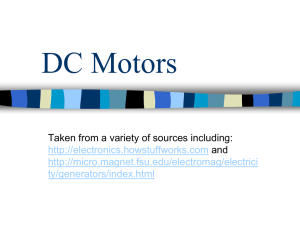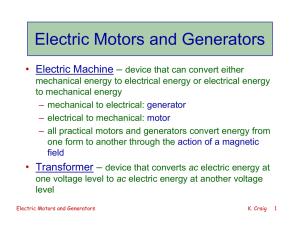Motors and Generators Lab - University of Michigan SharePoint Portal
advertisement
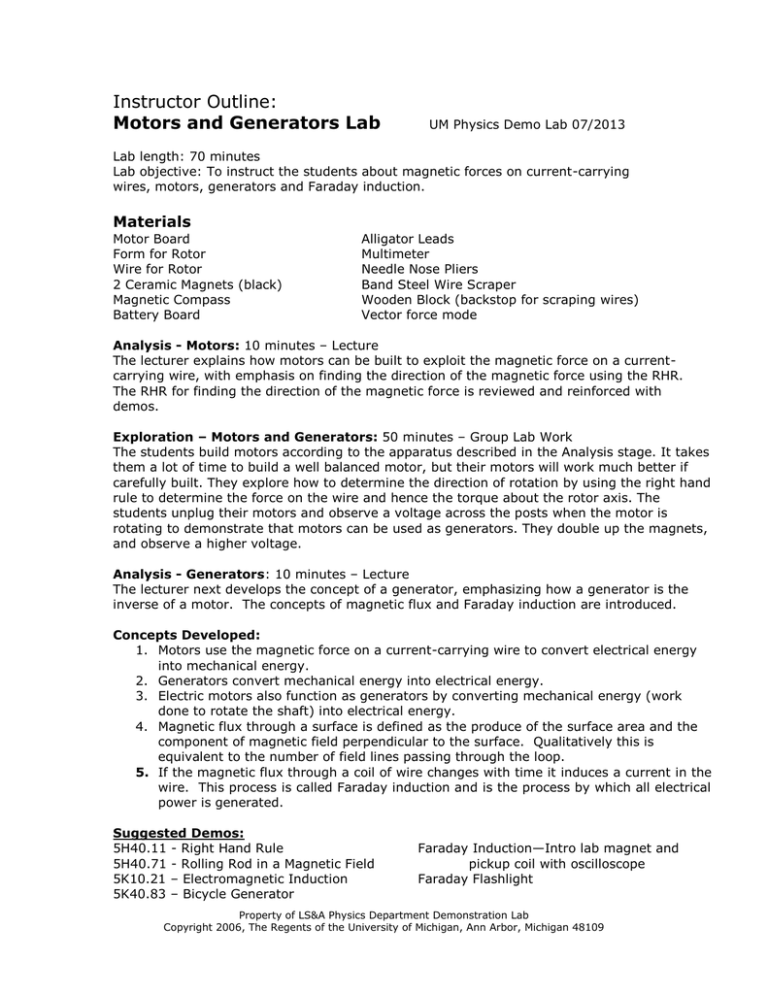
Instructor Outline: Motors and Generators Lab UM Physics Demo Lab 07/2013 Lab length: 70 minutes Lab objective: To instruct the students about magnetic forces on current-carrying wires, motors, generators and Faraday induction. Materials Motor Board Form for Rotor Wire for Rotor 2 Ceramic Magnets (black) Magnetic Compass Battery Board Alligator Leads Multimeter Needle Nose Pliers Band Steel Wire Scraper Wooden Block (backstop for scraping wires) Vector force mode Analysis - Motors: 10 minutes – Lecture The lecturer explains how motors can be built to exploit the magnetic force on a currentcarrying wire, with emphasis on finding the direction of the magnetic force using the RHR. The RHR for finding the direction of the magnetic force is reviewed and reinforced with demos. Exploration – Motors and Generators: 50 minutes – Group Lab Work The students build motors according to the apparatus described in the Analysis stage. It takes them a lot of time to build a well balanced motor, but their motors will work much better if carefully built. They explore how to determine the direction of rotation by using the right hand rule to determine the force on the wire and hence the torque about the rotor axis. The students unplug their motors and observe a voltage across the posts when the motor is rotating to demonstrate that motors can be used as generators. They double up the magnets, and observe a higher voltage. Analysis - Generators: 10 minutes – Lecture The lecturer next develops the concept of a generator, emphasizing how a generator is the inverse of a motor. The concepts of magnetic flux and Faraday induction are introduced. Concepts Developed: 1. Motors use the magnetic force on a current-carrying wire to convert electrical energy into mechanical energy. 2. Generators convert mechanical energy into electrical energy. 3. Electric motors also function as generators by converting mechanical energy (work done to rotate the shaft) into electrical energy. 4. Magnetic flux through a surface is defined as the produce of the surface area and the component of magnetic field perpendicular to the surface. Qualitatively this is equivalent to the number of field lines passing through the loop. 5. If the magnetic flux through a coil of wire changes with time it induces a current in the wire. This process is called Faraday induction and is the process by which all electrical power is generated. Suggested Demos: 5H40.11 - Right Hand Rule 5H40.71 - Rolling Rod in a Magnetic Field 5K10.21 – Electromagnetic Induction 5K40.83 – Bicycle Generator Faraday Induction—Intro lab magnet and pickup coil with oscilloscope Faraday Flashlight Property of LS&A Physics Department Demonstration Lab Copyright 2006, The Regents of the University of Michigan, Ann Arbor, Michigan 48109
